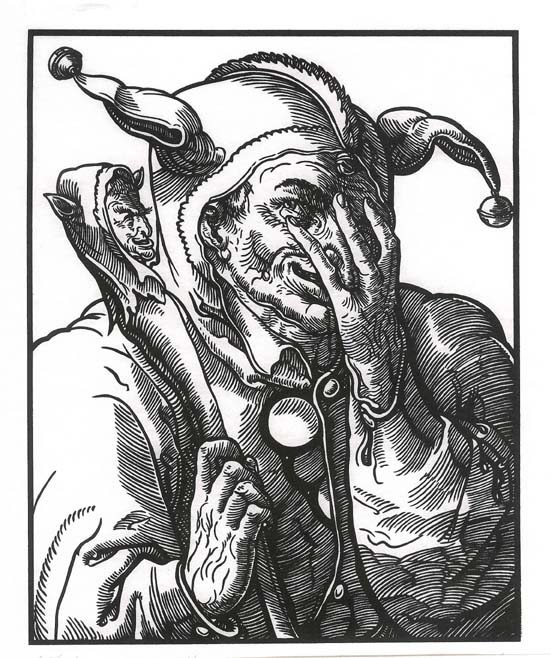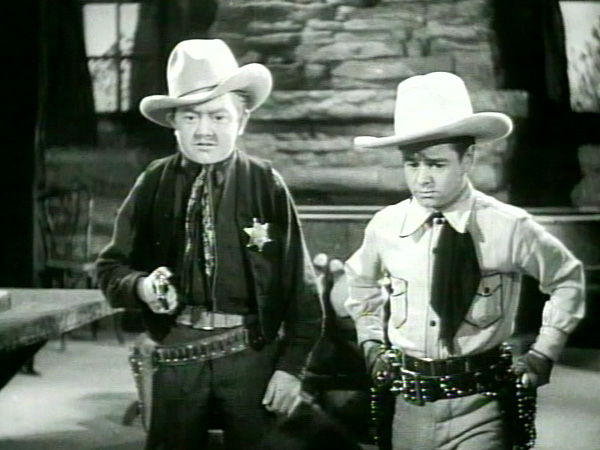 |
| Michael Parkes: the Juggler. |
Doing tricks seems like a frivolous thing. As
someone who has made a life and a living of tricks, acts and routines, I ask myself: Is there more to them than mere entertainment value? What makes them so captivating
and fascinating to me and the Crowd? What is their true power?
(Note: Here at The Illuminated Showman we believe the shaman to be a proto-showman. Read more here. In the context of these articles, the terms showman and shaman are interchangeable.)
Healing
The shaman is a healer of body,
mind and community. Not just healing sickness, but
creating and strengthening bonds; between clan members, and between Crowds and the Other World. (The spirit world/world of Imagination).
The vocational calling and necessary abilities of becoming a shaman were often aquired through illness. The person would encounter death but in the delirium of sickness he would miraculously heal himself. Through this
experience he was thought to grasp certain truths about the Mystery of
Healing, such as the healing power of faith, belief, suggestion, and ecstasy. The power of transformation and the use of altered states gain insight into the unknowable became very real for the shaman.
To help others the way he himself had been helped, he would revisit the place or mental state of his encounter with death. But conveying the mysterious was not an exact science. It was a human experience; rich, complicated and full of possible interpretations. It would need a special setting, showing, and telling. Here we find a clue to the origin of the Showman's Craft. The more powerful and gripping the representation of his ordeal was for the clan, the more effective it would be.
The shaman would tell the story through song, dance, weird animal noises, and, important for us in this article, a whole manner of tricks to sharpen the attention of the Crowd. Tricks like the magic illusions or skills which showmen now use daily to capture and shape the attention of their onlookers. Once the Crowd had been softened by the atmosphere of the dark tent and the shaman's ecstatic dancing in the flickering of fire, he would perform a trick. In this context the trick would lift the crowd into an altered state like a Zen koan. It would stop the normal thought processes and let the participants willingly give themselves over to the extraordinary. Sharing the shaman's journey into another realm in an elevated state of attention, the participants would themselves experience Mystery, its complex nature and potential power.
Perhaps in the end
the nature of Mystery,
the core of a Secret,
Is simply not knowing?
Tricks?
The unexplainable has a palpable, real power on human beings. To such an extent that whether the secret hidden in the mystery is real or not, does not diminish its power. For real truth is not something that is, but something that happens; an individual experience in the beholder. In the moment it is experienced it is true, and that gives the experience its power. The shamans were aware of this in their use of illusions or deception. They knew they were tricks, but that their power was real.
 Tricks conceals a double
meaning and a double reality. They were vital in displaying the shaman's power, as proof of his extraordinary abilities, but are at their root an illusion.
The state of mind required for healing was a jump into another mode of consciousness which had been experienced by the shaman as he fought for life in the throes of illness. To extend his healing power beyond himself, the shaman needed to create this state of mind in his Crowd without the illness. To do this he used hallucinogenic drugs that would quite literally alter the crowd's mind-sets, or with tricks. From the shaman's almost universal use of tricks, we know that this was an important way of opening the necessary portals of the mind. Of course there is no reason why the shaman couldn't do both, first have his crowd all drink from his potion of psilocybin mushrooms and then do tricks whilst the Crowd was intoxicated. Perhaps this was needed in extreme cases.
The tricks themselves were lenses for focusing the attention of the Crowd. They were not the point, but a means to an end. They were merely vehicles, the tools, which amplify and focus the real transformative power of the shaman.
Tricks conceals a double
meaning and a double reality. They were vital in displaying the shaman's power, as proof of his extraordinary abilities, but are at their root an illusion.
The state of mind required for healing was a jump into another mode of consciousness which had been experienced by the shaman as he fought for life in the throes of illness. To extend his healing power beyond himself, the shaman needed to create this state of mind in his Crowd without the illness. To do this he used hallucinogenic drugs that would quite literally alter the crowd's mind-sets, or with tricks. From the shaman's almost universal use of tricks, we know that this was an important way of opening the necessary portals of the mind. Of course there is no reason why the shaman couldn't do both, first have his crowd all drink from his potion of psilocybin mushrooms and then do tricks whilst the Crowd was intoxicated. Perhaps this was needed in extreme cases.
The tricks themselves were lenses for focusing the attention of the Crowd. They were not the point, but a means to an end. They were merely vehicles, the tools, which amplify and focus the real transformative power of the shaman.
It was a circle. Shaman, Tricks, Crowd. Each one enabling the next the ability of transformation. Tricks, in this sense, are tools for opening the mind and the heart of Crowds to create a state where the impossible can happen. Together the showman and the Crowd create something artificial, and therefor uniquely human. By man, for man.
The
true healing power of Lies
In a recent Radiolab episode on the placebo effect, Anthropologist
Daniel Mormon tells a story of an apprentice
Shaman.
A
young man of the Kwakiutl tribe of British Columbia called Kuesalid (?) is a
bit of a skeptic and thinks some of the activities of his tribes shaman aren’t real,
that they are tricking people. The shaman is a powerful and frightening man,
but Kuesalid is not going to let that stop him. He is determined to get to the bottom
of the so called magic.
He manages to get the shaman to take him on as an
apprentice and begins to learn the magic songs, dances and rituals of
the tribe. Eventually he has proved himself enough to earn their trust and they teach him one of their
most important and powerful healing rituals.
The ritual goes like this. A sick
person comes in and, after the appropriate songs and dances have been done, the
sacred smokes has cleansed the tent and the people, the shaman places his
lips against the afflicted part of the patient and sucks. The shaman would then suck something out of the patient and proceed
to cough out small feathers drenched in blood.
The
secret Kuesalid learnt was that the feathers were secretly put in the mouth, and as
the sucking goes on you bite the inside of your mouth. As you cough out the mixture of feathers and blood the
shaman claims the cause of the disease has now left the patient. This was what the
skeptical apprentice had suspected all along, but the story does not end there.
As
part of the obligation as an apprentice he would tend to the sick of
his tribe when called for. That was what happened. An important family asked
for his help to cure a sick daughter and, because of his obligation to the tribe as an apprentice, Kuesalid couldn’t say no. So off he went to her sickbed
and sang the songs, performed the rituals, and then preceded to perform the
feathers and blood suction ritual even though he knew it wasn’t real.
To
his great surprise the girl’s illness broke, and the healing was a great
success. Kuesalid was still not convince but he performed the feather ritual
again and again and found it to be incredibly effective. He was perplexed and
confused since he knew the ritual to be a trick of deception, but he also understood its great healing power. In the end Kuesalid finishes his
apprenticeship and becomes a healer and realizes, in the words of Daniel Mormon:
“Truth
and lies are not as fundamentally different as we think they are.”
The Power of Tricks
Within this story I believe we glimpse the
true power of tricks. Today we see the arts of the
Showman as mere deception, their shamanistic origins forgotten by
Crowds. No wonder, since it has also been largely forgotten by modern showmen. In today's performances
we rarely get any hint of the power that once was the main purpose for a
trick. I think the difference was the focus on the trick's effect on the observers as a means of transportation or elevation of mind, rather than the trick itself.
It has been suggested by Rogan Taylor in
his book ‘the Death and Resurrection Show’ that virtually every trick and
discipline of the modern showman has its origin in shamanistic rituals.
Tightrope walks across deep ravines were
performed by Siberian Shamans, rope climbing and trapeze-like feats in Dutch
Guiana by Carib shaman apprentices as part of their initiatory rituals. Sword swallowing feats were performed by Zuni Indians in
North America. Magic
tricks of every imaginable sort: appearances, disappearances, levitations, and
so forth, were universal.
In The Death and Resurrection Show, Rogan
Taylor tells the story of anthropologist Matilde Stephenson who spent years
living with the Zuni Indians. She was shocked and amazed when members of a so-called Sword Swallowing Fraternity swallowed not just one but four swords, swallowed one after the other and retracted simultaneously. She was so amazed
by this performance she could hardly believe what she had seen. As a true
scientist she began a long and arduous negotiation with the Fraternity to get a
private demonstration where she could be more prepared, and therefor more
certain, of the veracity of the feats. It turned out that getting a private
performance outside of the ritual circumstances was very hard to arrange. The
Fraternity did not see any place for the feat without its proper ceremonial
setting.
“Only
after prolonged efforts, and then purely because the white lady was so
well-loved and trusted by the Zuni, one was persuaded to come to her camp. He
insisted on strict and absolute secrecy and, even then never felt happy about
the whole business. Matilde Stevenson remarked that, “the Indian to this day
feels he was guilty of a great wrong in
swallowing the swords without the ceremony which should attend it.” (M. C.
Stevenson, The Zuni Indians: Their Mythologies; Esoteric Fraternities and
Ceremonies)
Here we get an insight into what it might have felt like for a shaman to be seen the way we see a showman today; mere entertainment without any deeper meaning or purpose than levity in the moment. To the Zuni sword swallower the trick's potential was now wasted.
The situation and circumstances of rituals were set up to create the right setting for tricks to function like keys to the crowds heart. Once unlocked with the trick's ability to create reverent attention, the shaman could take the observers further, towards healing, unification and insight.
Today it might seem far-fetched to attribute deep
meaning and importance to the tricks of the showman's trade, but in the shaman's
tradition these examples of mystery would have been at the center of healing
ceremonies at a time when doctor, priest, and showman was the same person. When faith was
the strongest remedy in the tool box. Herbal medicine was also in its infancy,
but nothing was as powerful as the human rituals.
If the Zuni sword swallower of yesteryear
watched a circus today it would might be like watching an orchestra playing
but without hearing the music; beautiful and engaging in its choreographed
movements but ultimately empty and unfulfilling. Perhaps it is time to bring
back the music.























